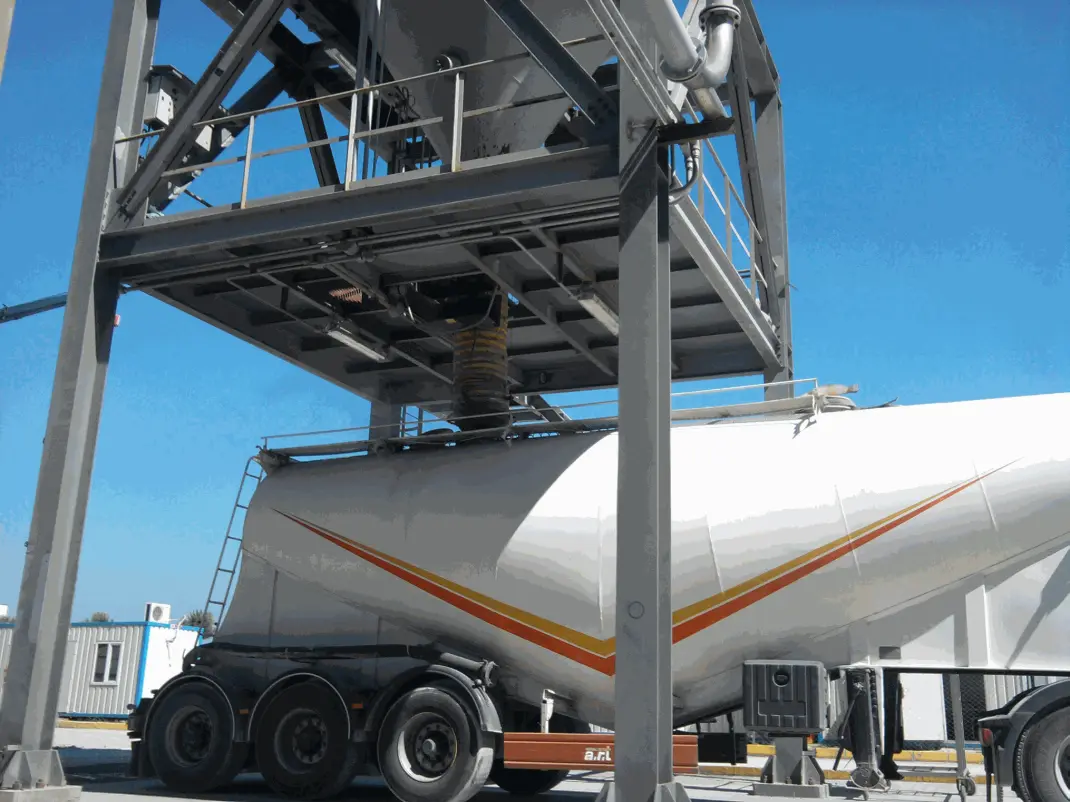Filling from Silo
Filling bulk bags directly from silos is a highly efficient and controlled method commonly used in industries such as food, chemical, and construction. Silos provide a centralized storage solution for bulk solids, enabling automated, dust-controlled filling operations ideal for high-volume packaging and logistics.

Process Overview
- Material Delivery from Silo:
Material flows from the silo through a controlled outlet, often using gravity feed or assisted by screw conveyors or pneumatic systems to regulate the flow rate. - Filling Station Setup:
The bulk bag is positioned under the silo outlet on a frame equipped with weighing systems and dust control units. The inlet spout of the big bag is securely connected to the silo discharge to prevent spillage and dust release. - Controlled Filling:
Flow rate is regulated using valves, rotary feeders, or screw conveyors, ensuring consistent and accurate filling. Weight sensors monitor the filling process, allowing automatic shut-off when the desired bag weight is reached. - Dust Containment:
The filling interface includes dust-tight connections, flexible sleeves, and local dust extraction units. This setup prevents dust emissions during filling, maintaining a clean working environment and compliance with hygiene and safety standards. - Bag Sealing & Handling:
After filling, the bulk bag is sealed and moved for storage or shipping using forklifts or automated palletizing systems.

Key Components
- Silo with Controlled Discharge:
Equipped with flow regulator equipment such as rotary valves, slide gates, or screw feeders to control the conveying of material. - Bulk Bag Frame with Weighing
System:
Holds the big bag securely during filling while continuously monitoring weight to ensure accurate dosing. - Dust-Tight Filling Interface:
Flexible sleeves or spout adapters connect the bag inlet to the silo outlet, preventing unwanted dust emissions. - Dust Extraction System:
Filters and vacuum units capture any airborne dust generated during the filling process. - Automated Controls:
Programmable logic controllers (PLCs) monitor flow rates, weigh control, and system safety interlocks.

Advantages of Filling from Silo
- High Accuracy:
Flow controls and integrated weight sensors maintain consistent and repeatable filling accuracy, reducing product loss and maintaining consistent production quality. - Enhanced Cleanliness:
Dust-tight interfaces and extraction systems maintain hygiene standards—critical for food and chemical products. - Automation Friendly:
Integration with silo management and control systems allows fully automated filling cycles, reducing labor costs and human error. - Space Efficiency:
Using silos for storage and feeding reduces the need for intermediate handling and minimizes floor space usage. - Versatile Capacity:
Suitable for various fill rates and bag sizes, designed for flexibility in low-volume and mass production. - Improved Safety:
Containment of dust reduces health risks and complies with workplace safety regulations.

Industry Applications
- Food Sector:
Silos storing flour, sugar, or starch feed directly into hygienic filling stations designed to maintain product integrity and prevent contamination. - Chemical Sector:
Powders like calcium carbonate or resins stored in silos are filled into bulk bags with tight dust control measures to ensure operator safety and environmental compliance. - Construction Sector:
Cement, lime, and similar materials stored in silos are accurately filled into bags for easy transport and on-site use.